A joint Canadian and Chinese team of scientists have described a remarkable fossil that preserves a dramatic moment in time when a carnivorous mammal attacked a bigger herbivorous dinosaur. Repenomamus attacks Psittacosaurus, a stunning fossil specimen from the Lower Cretaceous from the Lujiatun fossil beds.
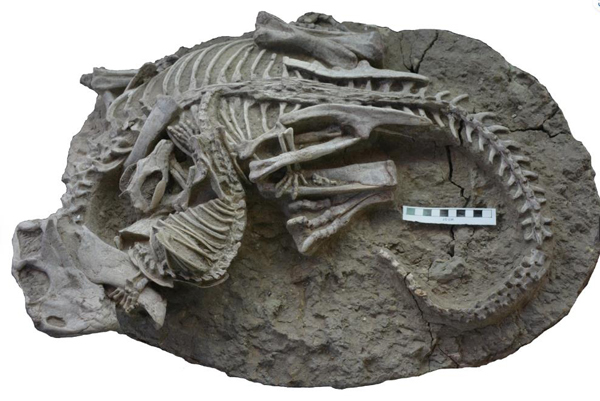
Mammal Attacks a Dinosaur
Dr Jordan Mallon (Canadian Museum of Nature), a co-author of the study published in the journal “Scientific Reports” commented:
“The two animals are locked in mortal combat, intimately intertwined, and it’s among the first evidence to show actual predatory behaviour by a mammal on a dinosaur.”

A Fossil from “China’s Dinosaur Pompeii”
The fossil’s discovery challenges the perception that dinosaurs had few threats from their mammal contemporaries during the Cretaceous. It is true to comment that in most terrestrial ecosystems the dinosaurs dominated. However, this exceptionally rare fossil demonstrates that some mammals may have attacked members of the Dinosauria.
The fossil was collected in China’s Liaoning Province in 2012, and both skeletons are nearly complete. Their completeness is due to the fact that they come from an area known as the Lujiatun fossil beds, which have been dubbed “China’s Dinosaur Pompeii”.
The fossil specimen is now in the collections of the Weihai Ziguang Shi Yan School Museum in China’s Shandong Province.

Repenomamus Attacks Psittacosaurus
The dinosaur victim has been identified as Psittacosaurus lujiatunensis. It was about the size of a large dog. It is being attacked by a Repenomamus robustus. Repenomamus is not closely related to placental mammals. It was a triconodont, larger and more powerfully built compared to most Mesozoic mammals. The taxonomic position of the Triconodonta within the stem mammals and the Mammalia remains controversial. With a body length of approximately one metre, R. robustus was smaller and lighter than Psittacosaurus lujiatunensis. However, this fossil provides evidence that this mammal attacked dinosaurs that were larger than itself.
Repenomamus Ate Psittacosaurus
It was already known that Repenomamus ate dinosaurs. A scientific paper was published in 2005 that documented the discovery of a large Repenomamus fossil specimen with the preserved remains of a juvenile Psittacosaurus in what would have been the animal’s digestive tract.
Dr Mallon explained:
“The co-existence of these two animals is not new, but what’s new to science through this amazing fossil is the predatory behaviour it shows.”
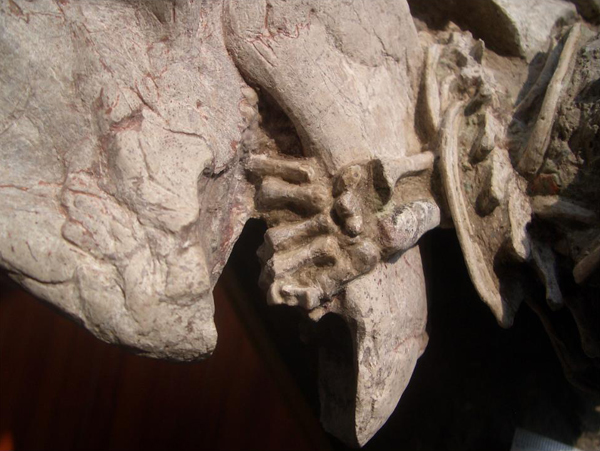
The Lujiatun Member (Yixian Formation)
The Lujiatun Member of the Lower Cretaceous Yixian Formation of China is famous for its extensive vertebrate fossil remains. Animals were buried by mudslides and debris following volcanic eruptions. These pyroclastic flows entombed these unfortunate creatures preserving their last moments of life more than 125 million years ago.
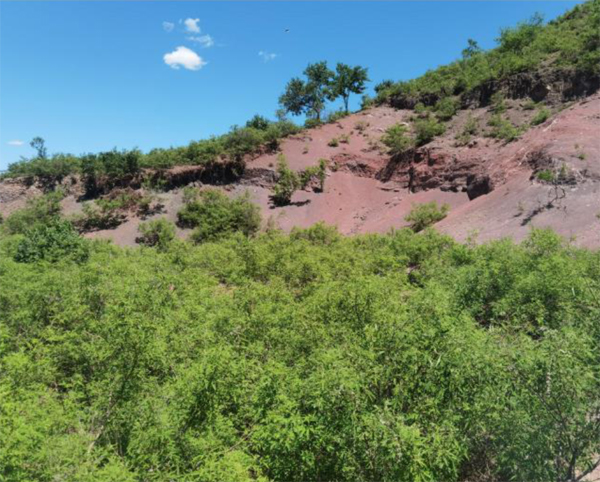
The Psittacosaurus-Repenomamus fossil was in the care of study co-author Dr Gang Han in China, who brought it to the attention of Canadian Museum of Nature palaeobiologist Xiao-Chun Wu. Whilst fossil forgeries are known from the Jehol Group of China, the research team excavated more of the matrix and confirmed that this was an authentic specimen, most likely preserving predatory behaviour.
Repenomamus the Aggressor
A detailed examination of the fossil pair shows that the Psittacosaurus is lying prone, with its hindlimbs folded on either side of its body. The body of the Repenomamus coils to the right and sits atop its prey, with the mammal gripping the jaw of the larger dinosaur. The mammal is also biting into some of the ribs, and the back foot of Repenomamus is gripping onto the dino’s hind leg. These animals are locked in mortal combat.
Dr Mallon postulated that the weight of evidence suggested that an attack from the Repenomamus was underway when the pyroclastic flow killed both animals.
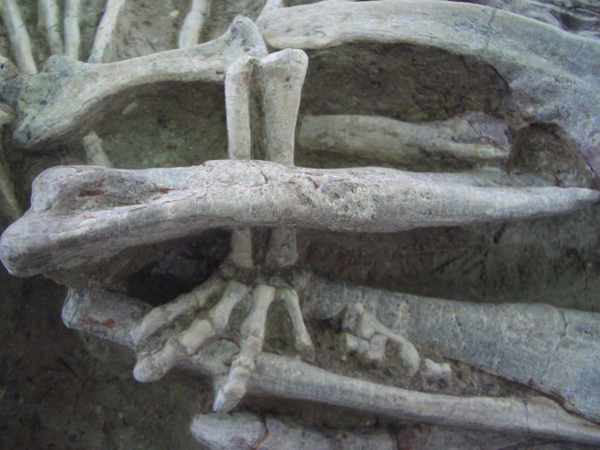
Not Scavenging a Carcase
The research team have ruled out the possibility that the Repenomamus was scavenging a Psittacosaurus corpse. Tooth marks on the dinosaur bones are absent, suggesting that this fossil represents evidence of a mammal attacking a dinosaur.
It is unlikely the two animals would have become so entangled if the dinosaur had been dead before the mammal encountered it. The position of the Repenomamus on top of the Psittacosaurus suggests it was also the aggressor.
Attacks on herbivores by smaller carnivores are seen today. Mallon and Wu note that some lone wolverines are known to hunt larger animals, including caribou and domestic sheep. On the African savanna, wild dogs, jackals and hyenas will attack prey that are still alive, with the prey collapsing, often in a state of shock.
Dr Mallon stated:
“This might be the case of what’s depicted in the fossil, with the Repenomamus actually eating the Psittacosaurus while it was still alive—before both were killed in the roily aftermath.”
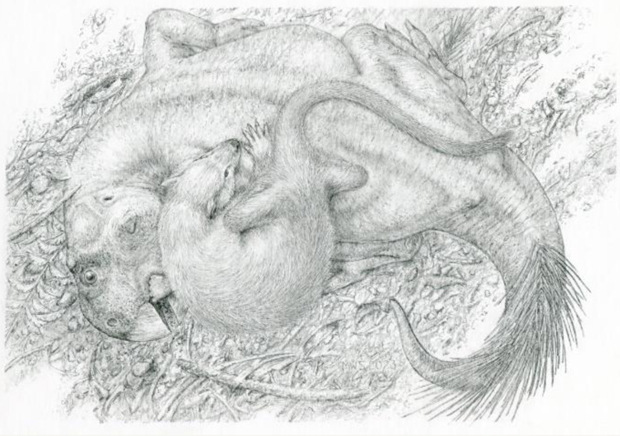
The research team speculates in their research paper that further amazing fossils await discovery. The volcanically derived deposits from the Lujiatun fossil beds will continue to yield new evidence of interactions among species.
Everything Dinosaur acknowledges the assistance of a media release from the Canadian Museum of Nature in the compilation of this article.
The scientific paper: “An extraordinary fossil captures the struggle for existence during the Mesozoic” by Gang Han, Jordan C. Mallon, Aaron J. Lussier, Xiao-Chun Wu, Robert Mitchell and Ling-Ji Li published in Scientific Reports.


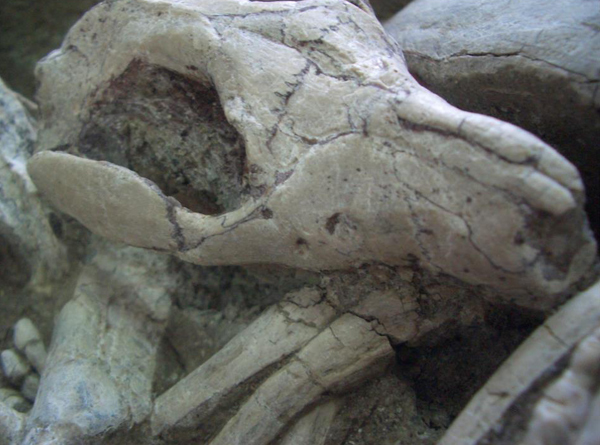




Leave A Comment